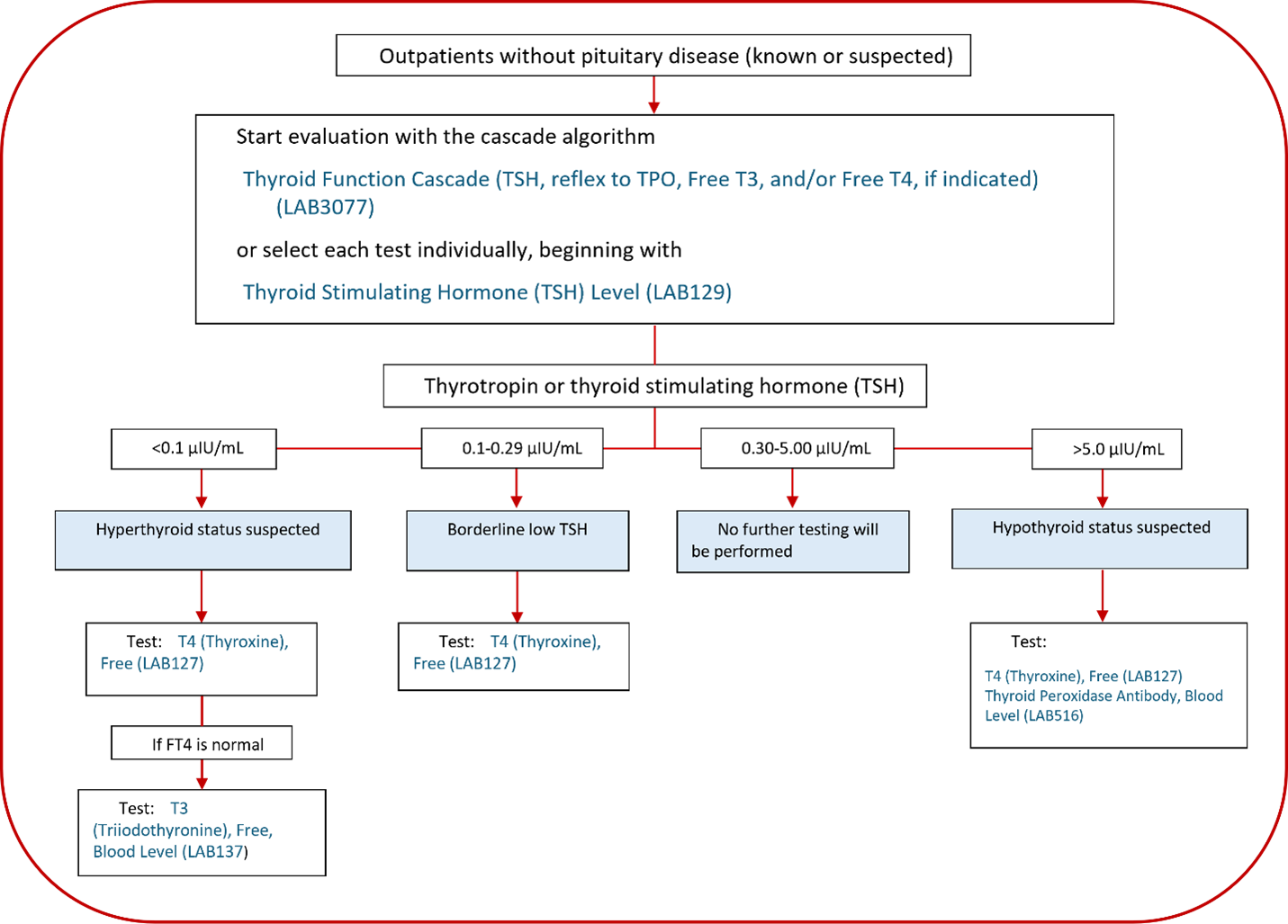Written by Yasel Fleitas Alvarez, Ph.D., Chemistry Clinical Advisor, Corewell Health Reference Laboratory West, Michigan Pathology Specialists.
This January we are celebrating the National Thyroid Awareness Month. In United States of America, it is estimated that approximately 20 million people have thyroid disease and most importantly, according to the American Thyroid Association (ATA) as many as 60% of people suffering from a thyroid disorder are not aware they have it.The thyroid is a butterfly shaped-gland located at the front of the neck that produces and release thyroid hormones (See Figure 1).

Figure 1. Thyroid Gland Anatomy and Histology
It regulates important physiological functions as:
-
- Breathing
- Heart rate
- Energy production
- Muscle strength
- Body temperature
- Weight
- Mood
Thyroid disease can present in two main forms:
- Hypothyroidism (under functioning thyroid)
- Hyperthyroidism (over functioning thyroid)
Confirmation or exclusion of thyroid disease requires a clinical examination combined with biochemical determination of thyroid hormones (TH) and thyrotropin (TSH)concentrations.
In this blog we discuss the best practices for ordering thyroid function tests for the initial screening of thyroid disease at Corewell Health.
For the screening of non-hospitalized patients without known or suspected pituitary disease it is recommended to begin the evaluation with “Thyroid Function Cascade (TSH, reflex to Thyroid Peroxidase Antibody (TPO), Free T3, and/or Free T4, if indicated) (LAB3077)” where all appropriate tests are performed automatically if required. Alternatively, each test can be ordered separately, but it is recommended to begin with “Thyroid Stimulating Hormone (TSH) Level (LAB129)” (See Scheme 1).
- If the TSH is within the normal range (0.30-5.00 µIU/mL), no further testing will be performed, unless clinically indicated.
- If the TSH is elevated (above 5.00 µIU/mL), a “T4 (Thyroxine), Free (LAB127)” and “Thyroid Peroxidase Antibody, Blood Level (LAB516)” will be performed as reflex tests.
- If the TSH is decreased (below 0.30 µIU/mL), a “T4 (Thyroxine), Free (LAB127)” will be performed as a reflex test.
- If the TSH is markedly decreased (below 0.10 µIU/mL), and the Free T4 is normal (not above the upper limit of normal of 1.6 ng/dL), a T3 (Triiodothyronine), Free, Blood Level (LAB137) will be performed as an additional reflex test.
In general, the interpretation of thyroid functions tests is straightforward for the majority of patients presenting a pattern that is consistent with clinical findings of thyroid status. However, in cases where the interpretation of Thyroid Function Tests (TFTs) is cumbersome because the thyroid hormones and thyrotropin are discordant or do not align with the clinical picture, we recommend to place a referral to our Corewell Health Specialist endocrine unit.

Scheme 1. Thyroid Function ordering algorithm at Corewell Health West. TSH reference ranges are for 10 years and older. For pediatric intervals visit Lab Test Catalog, West, Thyroid Stimulating Hormone (TSH) Level (LAB129).
References
- Tietz Textbook of Clinical Chemistry. Chapter 49: Fourth edition. Edited by CA Burtis, ER Ashwood, DE Bruns. Philadelphia, WB Saunders Company, 2006, pp 1893-1912
- Surks MI, Chopra IJ, Mariash CN, Nicoloff JT, Solomon DH. American Thyroid Association Guidelines for Use of Laboratory Tests in Thyroid Disorders. 1990;263(11):1529–1532. doi:10.1001/jama.1990.03440110095035
- Olympia Koulouri, Carla Moran, David Halsall, Krishna Chatterjee, Mark Gurnell. Pitfalls in the measurement and interpretation of thyroid function tests, Best Practice & Research Clinical Endocrinology & Metabolism. Volume 27, Issue 6, 2013, pages 745-762, ISSN 1521-690X, https://doi.org/10.1016/j.beem.2013.10.003.
- BioRender (2021). Thyroid Gland Anatomy and Histology. https://app.biorender.com/biorender-templates/figures/all/t-6047bf90fb554126e6649a63-thyroid-gland-anatomy-and-histology
